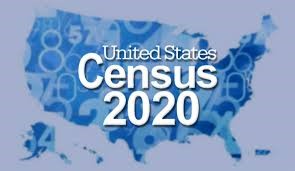
Friends, did you complete your Census for 2020 and return it as you were directed? Something tells me this (2020) census will not be as accurate as others have been. Americans are distracted by the horrible pandemic we face.
But as someone who has used information from US Census since the first ones were taken in 1790, I feel they are helpful not only to family histories, but local histories, and a good peek at the social environment of the time. The very earliest census information listed only the head of household (usually a man) and tally marks for others in the household. Males and females were in separate groups as were whites and slaves. Native Americans were not listed. One of the best parts of that arrangement was families tended to cluster together, leaving the researcher with names of household heads.
The Census of 1850 was very helpful. Suddenly, the whole household was recognized with visitors, in-laws, and anyone else who spent that night in the house or hotel or even, the jail. That census included the name of each individual, their sex, color, age, birthplace, occupation, value of property owned, education and disabilities. In 1850 and 1860 slaves were enumerated separately with only their first names under the name of the owner.
By 1870 slavery was abolished, but in the South numerous people, both black and white, hid from the census enumerator. My most favorite census of all time was the 1880. Categories of information were expanded to provide a more complete family portrait. The relationship to the head of the household, the marital status of each person, and the birthplace not only of each individual but of their fathers and mother became available. After the Civil War special schedules or questions were in use for various groups. One was the Agricultural schedule. I have found these particularly helpful, being from farming and ranching families. I have never used Statistic of Industry that included blacksmiths, wool and cotton processors and cottage industry. Social Statistics census asked such questions as the number of churches in a town, as well as schools and libraries. A very helpful schedule was the Mortality Schedule. This covered all persons who died within the year of census. As an example, Alexander Marion Seay showed up on the Mortality Schedule of Montague County, Texas, in 1880.
I don’t know whether that discovery was helpful or not. Seay was a Confederate soldier who jumped off a flat car to get his hat while being transported to battle in Tennessee. The fall broke his ankle and he was discharged. No more information until 1872 when the family arrived in Collin County, Texas, to visit a sister. From there they move to Montague County, he bought lands and started to raise cattle. Then in the Mortality Schedule he was listed as killing three men before he killed himself. No further information. One of my great-aunts scolded a cousin and me for asking questions. Those were things we didn’t talk about!
Supposedly the most informative census was the one in 1890 but unfortunately a fire at the Census Department destroyed many of the 1890 papers while the remainders were destroyed to make use for military papers in both World Wars. Census records from 1790 to 1940 are available online to the public at Ancestor.Com. Census records include more personal information in the 20th century. However, the 2020 census has little. It is really a statistical data document. Future historians and genealogists will be disappointed.
